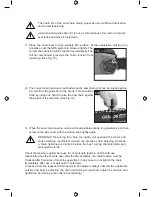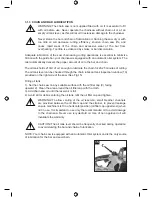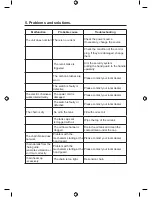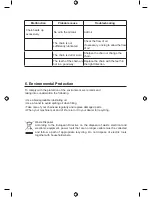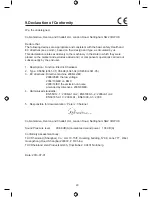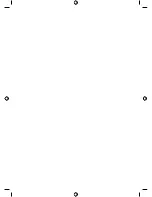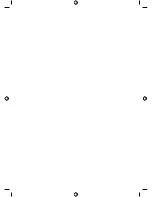
pinching either the saw chain or the guide bar when the second notch is being made.
- Felling back cut: make the felling back cut (Y)
at least 50 mm higher than the
horizontal notching cut. Keep the felling back cut parallel to the horizontal notching cut.
Make the felling back cut so enough wood is left to act as a hinge. The hinge wood
keeps the tree from twisting and falling in the wrong direction. Do not cut through the
hinge.
- As the felling gets close to the hinge the tree should begin to fall. If there is any
chance that the tree may not fall in
the
desired direction or it may rock back and bind
the saw chain, stop cutting before the felling back cut is complete and use wedges of
wood, plastic, or aluminum to open the cut and drop the tree along the desired line of
fall.
- When the tree begins to fall remove the chain saw from the cutting, stop the motor,
put the chain saw down, and then use the retreat path planned. Be alert for overhead
limbs falling and watch your footing.To complete the felling operation, drive a wedge
(Z) into the horizontal cut.
-Beware of falling branches when the tree starts to move.
b. Cutting branches
• When using a chainsaw to remove the branches of a tree to the ground, start with
the
small
branches and those that are not in contact with the ground. Be careful when cutting limbs
under tension as they may be projected to
o
quickly when you suddenly relieve the
tension.
• When you cut the branches, the tree could roll. Always have a backup channel open
in the opposite risk to get away quickly sense. Keep the work area clear to avoid treas-
woodshed
• Never operate a chainsaw arms outstretched. Do not try to cut hard-to-reach areas or
by
standing on a ladder. Never work at a height above the shoulders.
c.Cutting logs and planks
• Use a sawhorse or a stable support. Saw still outside of arm sawhorse. The substrate
must be high enough to prevent the tip of the guide
bar
touch
ing
the ground and the
chain becomes dull.
• If the saw gets stuck, stop the machine and remove it from the
socket
. Raise the
workpiece and change its position. Never attempt to free the trapped saw by pulling the
handle or the electric cable
• Place the saw on one end and put it on at full speed. Advance the saw without force
using the
bar spikes
as a pivot point. If necessary, reposition the
spikes
on the timber
to limit the angle of cut.
Note: The diameter of the work piece must not exceed the length of the guide bar
18











